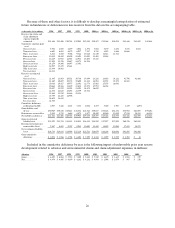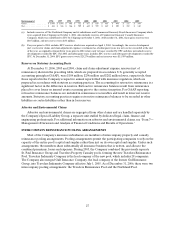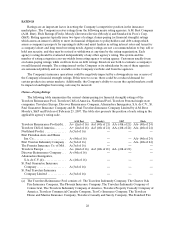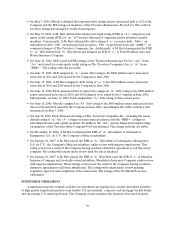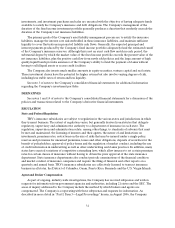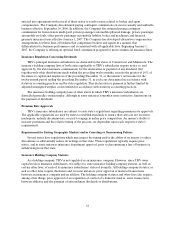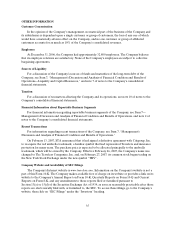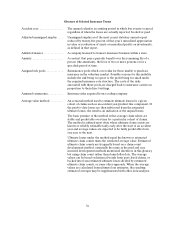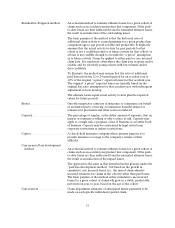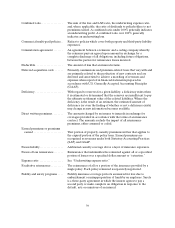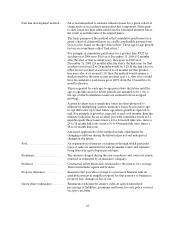Travelers 2006 Annual Report Download - page 45
Download and view the complete annual report
Please find page 45 of the 2006 Travelers annual report below. You can navigate through the pages in the report by either clicking on the pages listed below, or by using the keyword search tool below to find specific information within the annual report.33
Insurance Regulations Concerning Change of Control
Many state insurance regulatory laws contain provisions that require advance approval by state
agencies of any change in control of an insurance company that is domiciled, or, in some cases, having
substantial business that it is deemed to be commercially domiciled, in that state.
The laws of many states also contain provisions requiring pre-notification to state agencies prior to
any change incontrol of a non-domestic insurance company admitted to transact business in that state.
While these pre-notification statutes do not authorize the state agency to disapprove the change of control,
they do authorize issuance of cease anddesist orders with respect to the non-domestic insurer if it is
determined that some conditions, such as undue market concentration, would result from the acquisition.
Any transactions that would constitute a change in control of any of TRV’s insurance subsidiaries
would generally require prior approval by the insurance departments of the states in which the insurance
subsidiaries are domiciled or commercially domiciled. They may also require preacquisition notification in
those states that have adopted preacquisition notification provisions and in which such insurance
subsidiaries are admitted to transact business.
One of TRV’s insurance subsidiaries and its operations at Lloyd’s are domiciled in the United
Kingdom. Insurers in the United Kingdom are subject to change of control restrictions in the Financial
Services and Markets Act of 2000 including approval of the Financial Services Authority. Insurers in the
Republic of Ireland are subject to regulation by the Irish Financial Services Regulatory Authority.
Some of TRV’s other insurance subsidiaries are domiciled in, or authorized to conduct insurance
business in, Canada. Authorized insurers in Canada are subject to change of control restrictions in
Section 407 of the Insurance Companies Act, including approval of the Office of the Superintendent of
Financial Institutions.
These requirements may deter, delay or prevent transactions affecting the control of or the ownership
of common stock, including transactions that could be advantageous to TRV’s shareholders.
Assessments for Guaranty Funds and Second-Injury Funds and Other Mandatory Pooling Arrangements
Virtually all states require insurers licensed to do business in their state to bear a portion of the loss
suffered by some insureds because of the insolvency of other insurers. Many states also have laws that
established second-injury funds to provide compensation to injured employees foraggravation of a prior
condition or injury.
TRV’s insurance subsidiaries are also required to participate in various involuntary assigned risk
pools, principally involving workers’ compensation and automobile insurance, which pro vide various
insurance coverages to individuals or other entities that otherwise are unable to purchase that coverage in
the voluntary market.
Insurance Regulatory Information System
The National Association of Insurance Commissioners (NAIC) developed the Insurance Regulatory
Information System (IRIS) to help state regulators identify companies that may require special attention.
Financial examiners review annual statements and key financial ratios based on year-end data. These ratios
assist state insurancedepartments in executing their statutory mandate to oversee the financial condition
of insurance companies. Each ratio has an established“usual range” of results. A ratio result falling
outside the usual range of IRIS ratios, however, is notconsidered afailing result; rather, unusual values
are viewed as part of the regulatory early monitoring system. Furthermore, in some years, it may not be
unusual for financially sound companies to have several ratios with results outside the usual ranges.





